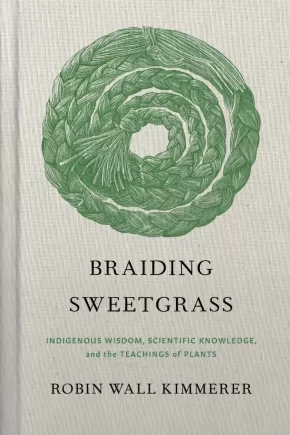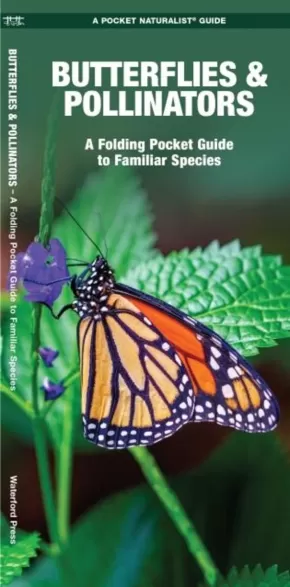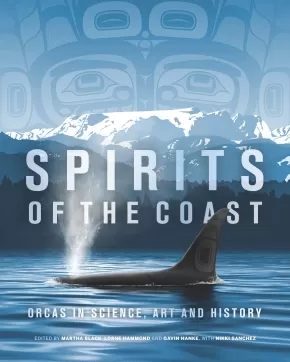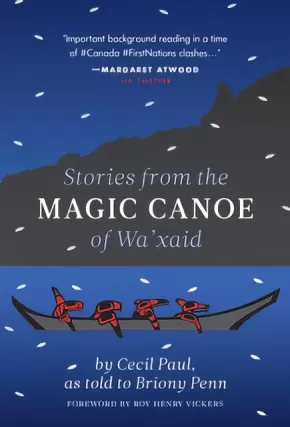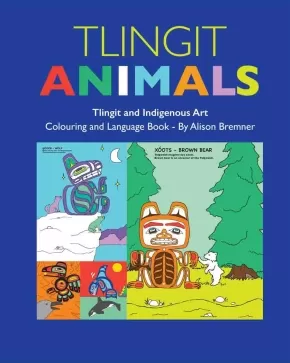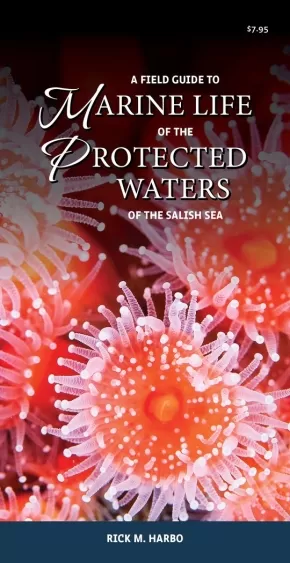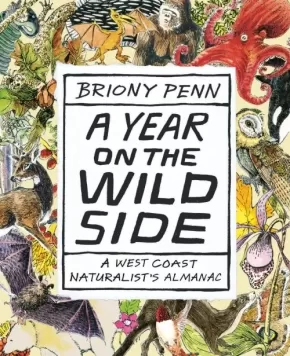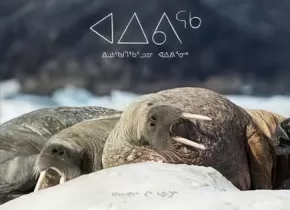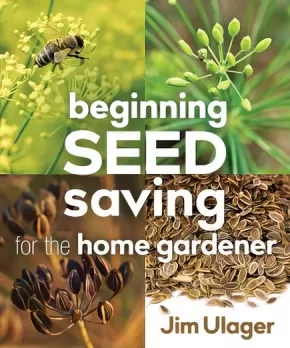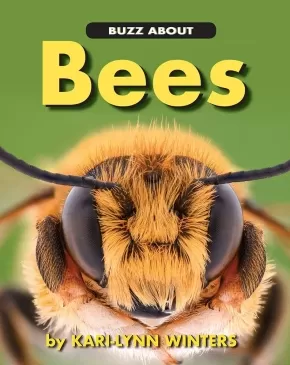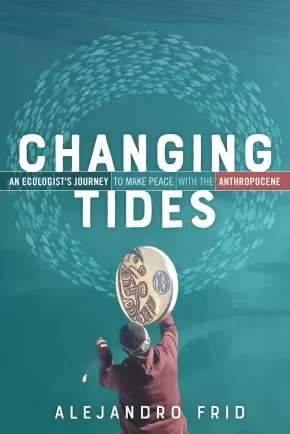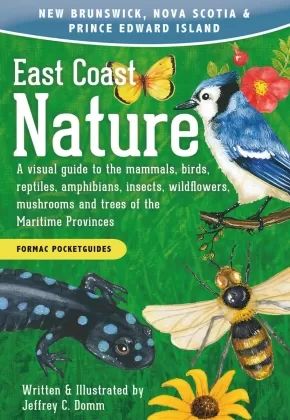
Science and Technology
46
-
60
of
141 Results;
Sort By
Go To
of 10
A Field Guide to Crabs of the Pacific Northwest
$7.95
Format:
Pamphlet
Reading Level: N/A
ISBN / Barcode: 9781550179095
Synopsis:
Synopsis:
Crabs can be found in abundance along the shorelines from Oregon to BC, burrowed under sand, soil and rocks. Keep this portable field guide handy on trips to the seashore to identify over forty species of crabs and hermit crabs in all shapes and sizes. Discover the differences between the Butterfly Crab and the Puget Sound King Crab and learn how to distinguish between male and female crabs. With full-colour photographs featuring both dorsal and ventral views, and accompanied by descriptive text for easy identification, A Field Guide to Crabs of the Pacific Northwest is an ideal companion for curious beachgoers of all ages.
Additional Information
2 pages | 37.00" x 9.00"
A Field Guide to Fossils
$7.95
Artists:
Format:
Pamphlet
Reading Level: N/A
ISBN / Barcode: 9781550179101
Synopsis:
Synopsis:
From dinosaur bones to petrified wood and from primordial seashells to archaic oddballs, this handy field guide makes identification of fossils a cinch. Learn how to identify a fossil and discover the most up-to-date tips on where and when to hunt for them. Featuring gorgeous full-coloured photos and paired with short and informative descriptions, this field guide is suitable for fossil enthusiasts of all ages and skill levels. Lightweight and pocket-sized for convenience, A Field Guide to Fossils is easy to grab and toss into any fossil lover’s backpack on their next adventure.
Additional Information
2 pages | 37.00" x 9.00" | 65 colour photographs | Pamphlet
Braiding Sweetgrass: Indigenous Wisdom, Scientific Knowledge and the Teachings of Plants (HC)
$54.50
Format:
Hardcover
Text Content Territories:
Indigenous American; Native American; Anishinaabeg; Potawatomi; Indigenous;
ISBN / Barcode: 9781571311771
Synopsis:
Synopsis:
Updated with a new introduction from Robin Wall Kimmerer, the special edition of Braiding Sweetgrass celebrates the book as an object of meaning that will last the ages. Beautifully bound with a new cover featuring an engraving by Tony Drehfal, this edition includes a bookmark ribbon, a deckled edge, and five brilliantly colored illustrations by artist Nate Christopherson. In increasingly dark times, we honor the experience that more than 350,000 readers in North America have cherished about the book—gentle, simple, tactile, beautiful, even sacred—and offer an edition that will inspire readers to gift it again and again, spreading the word about scientific knowledge, indigenous wisdom, and the teachings of plants.
As a botanist, Robin Wall Kimmerer has been trained to ask questions of nature with the tools of science. As a member of the Citizen Potawatomi Nation, she embraces the notion that plants and animals are our oldest teachers. In Braiding Sweetgrass, Kimmerer brings these two lenses of knowledge together to take us on “a journey that is every bit as mythic as it is scientific, as sacred as it is historical, as clever as it is wise” (Elizabeth Gilbert).
Drawing on her life as an indigenous scientist, and as a woman, Kimmerer shows how other living beings—asters and goldenrod, strawberries and squash, salamanders, algae, and sweetgrass—offer us gifts and lessons, even if we've forgotten how to hear their voices. In reflections that range from the creation of Turtle Island to the forces that threaten its flourishing today, she circles toward a central argument: that the awakening of ecological consciousness requires the acknowledgment and celebration of our reciprocal relationship with the rest of the living world. For only when we can hear the languages of other beings will we be capable of understanding the generosity of the earth, and learn to give our own gifts in return.
Educator Information
Includes an updated introduction from the author.
Additional Information
456 pages | 5.50" x 8.50" | Hardcover
Butterflies & Pollinators: A Folding Pocket Guide to Familiar Species
$11.95
Format:
Pamphlet
Reading Level: N/A
ISBN / Barcode: 9781620054666
Synopsis:
Synopsis:
Some of the most vibrant colors and patterns in the Animal Kingdom are found among butterflies. Gawdy swallowtails, exquisite gossamer-wings, and a multitude of eye-catching brushfoots are particular standouts, though plenty of whites, sulphurs, metalmarks, and skippers are also adorned with splendid markings. Flowering plants across North America attract some 700 butterfly species as well as thousands of moths, bees, wasps, flies, and beetles, not to mention some hummingbirds and bats. This portable reference is a handy tool for those wishing to deepen their understanding of butterflies and other colorful pollinators. It features beautiful illustrations of 70 familiar butterflies and moths as well as some especially common larvae and pupae. Also included are notes on life cycles and other common pollinators. Laminated for durability, this lightweight, 12-panel folding pocket guide is a terrific resource for educators, learners, naturalists, and gardeners.
Additional Information
12 pages | 4.10" x 8.35"
Mother Earth Plants for Health & Beauty: Indigenous Plants, Traditions, and Recipes
$24.95
Format:
Paperback
Text Content Territories:
Indigenous Canadian; Métis;
ISBN / Barcode: 9781926696645
Synopsis:
Synopsis:
The recipes and traditions found in this book reflect the culture and the knowledge of the Medicine Wheel, featuring 26 edible and medicinal plants that you can gather in nature as Carrie and her grandmother did.
Create a luxurious and natural beauty regime by crafting your own lotions, soaps and teas from all-natural ingredients. From stress-busting teas and bath bombs to skin-smoothing lotions and creams, get vibrant skin and a healthy glow with Carrie’s creations based on her grandmother’s traditional teachings.
"I remember gathering plants and berries with my grandmother while she shared her stories and her deep understanding of traditional plants and their uses. My grandmother healed us with her medicinal plants—everything from pink eye, sore throats, stomach ailments, aches and pains, and infections. She’d make us these beautiful, healing teas." –Carrie
Additional Information
144 pages | 6.00" x 7.75"
Spirits of the Coast: Orcas in Science, Art and History
$29.95
Editors:
Format:
Hardcover
Text Content Territories:
Indigenous Canadian;
ISBN / Barcode: 9780772677686
Synopsis:
Synopsis:
An insightful collection exploring the plight, past and promise of the orca, powerful symbol of BC’s wild coast and apex predator of all oceans. Spirits of the Coast brings together the work of marine biologists, Indigenous knowledge keepers, poets, artists and storytellers, united by their enchantment with the orca. Long feared in Western cultures as “killer whales,” and respected and honoured by Indigenous cultures as friends, family or benefactors, orcas are complex social beings with culture and language of their own. With contributors ranging from Briony Penn to David Suzuki, Gary Geddes and Michael Nicoll Yahgulanaas, this collection brings together diverse voices, young and old, to explore the magic, myths, and ecology of orcas. A literary and visual journey through past and possibility, Spirits of the Coast illustrates how these enigmatic animals have shaped us as much as our actions have impacted them, and provokes the reader to imagine the shape of our shared future.
Educator Information
Includes Indigenous and non-Indigenous contributions.
Recommended in the Canadian Indigenous Books for Schools 2020/2021 resource list for grades 9 to 12 for English Language Arts, Law, Social Studies, Social Justice, Science.
Additional Information
192 pages | 8.00" x 10.00"
Stories from the Magic Canoe of Wa'xaid (PB)
$25.00
Format:
Paperback
Text Content Territories:
Indigenous Canadian; First Nations; Haisla (Kitamaat); Xenaksiala (Henaksiala);
ISBN / Barcode: 9781771603379
Synopsis:
Synopsis:
A remarkable and profound collection of reflections by one of North America’s most important Indigenous leaders.
My name is Wa’xaid, given to me by my people. ‘Wa’ is ‘the river’, ‘Xaid’ is ‘good’ – good river. Sometimes the river is not good. I am a Xenaksiala, I am from the Killer Whale Clan. I would like to walk with you in Xenaksiala lands. Where I will take you is the place of my birth. They call it the Kitlope. It is called Xesdu’wäxw (Huschduwaschdu) for ‘blue, milky, glacial water’. Our destination is what I would like to talk about, and a boat – I call it my magic canoe. It is a magical canoe because there is room for everyone who wants to come into it to paddle together. The currents against it are very strong but I believe we can reach that destination and this is the reason for our survival. —Cecil Paul
Who better to tell the narrative of our times about the restoration of land and culture than Wa’xaid (the good river), or Cecil Paul, a Xenaksiala elder who pursued both in his ancestral home, the Kitlope — now the largest protected unlogged temperate rainforest left on the planet. Paul’s cultural teachings are more relevant today than ever in the face of environmental threats, climate change and social unrest, while his personal stories of loss from residential schools, industrialization and theft of cultural property (the world-renowned Gps’golox pole) put a human face to the survivors of this particular brand of genocide.
Told in Cecil Paul’s singular, vernacular voice, Stories from the Magic Canoe spans a lifetime of experience, suffering and survival. This beautifully produced volume is in Cecil’s own words, as told to Briony Penn and other friends, and has been meticulously transcribed. Along with Penn’s biography of Cecil Paul, Following the Good River, Stories from the Magic Canoe provides a valuable documented history of a generation that continues to deal with the impacts of brutal colonization and environmental change at the hands of politicians, industrialists and those who willingly ignore the power of ancestral lands and traditional knowledge.
Reviews
“The Magic Canoe brings peace to one’s soul. It is a warm wind moving our hearts. Wa’xaid takes us on a journey that regenerates and empowers us. T’ismista, the stone hunter, looks down on the Magic Canoe and reminds us to listen to storytellers like Cecil Paul. This is a story for the family of man; we are all in the canoe together and our stories need to be shared with each other.” – Roy Henry Vickers
Educator Information
Recommended in the Canadian Indigenous Books for Schools 2019-2020 resource list, as well as the 2020-2021 resource list, for grades 9 to 12 for English Language Arts, Social Studies, and Science.
Additional Information
224 pages | 5.00" x 7.00" | Paperback
Tlingit Animals: Tlingit and Indigenous Art Colouring and Language Book
$9.00
Artists:
Format:
Paperback
Text Content Territories:
Indigenous American; Alaska Native; Tlingit;
ISBN / Barcode: 9781554766239
Synopsis:
Synopsis:
Alaskan Alison Bremner reclaims her ancestral language in this Tlingit coloring book featuring her original art. Alongside each drawing, each animal is identified by their English and Tlingit names. The English and Tlingit sentences below explain each animal’s cultural significance. Tlingit Animals is intended to teach younger generations Tlingit culture and language, in addition to developing reading skills and creativity.
Educator Information
24 pages colouring and language book Tlingit Indigenous Art
Printed in Canada
Additional Information
24 Pages
A Field Guide to Marine Life of the Protected Waters of the Salish Sea
$7.95
Format:
Pamphlet
Reading Level: N/A
ISBN / Barcode: 9781550178531
Synopsis:
Synopsis:
A Field Guide to Marine Life of the Protected Waters of the Salish Sea includes the most commonly observed species in the tide pools and protected waters of the Salish Sea—that intricate network of coastal waterways spanning southern BC and northwestern Washington. Covering invertebrates, fish and seaweeds, this guide includes key identification features, fun facts and habitat, as well as seventy colour photographs. Water-resistant and compact, this guide is easy to pack on any trip to the shore and perfect for curious minds of all ages.
Rick Harbo is one of the Pacific Northwest’s leading marine writers and photographers.
Additional Information
2 pages | 37.00" x 9.00" | 75 photographs | Pamphlet
A Year on the Wild Side: A West Coast Naturalist's Almanac
$26.00
Format:
Paperback
ISBN / Barcode: 9781771512671
Synopsis:
Synopsis:
A freshly designed, new edition of a funny weekly chronicle that offers a year-long, intimate view of the flora and fauna populating the West Coast.
A Year on the Wild Side is a witty commentary on the social and natural history of Vancouver Island. Composed of short, readable essays arranged into 12 monthly chapters, this engaging book reveals the magic and humour of the natural world and reminds us of our place within it.
As the weeks and seasons unfold with the turning of the pages, you’ll be in sync with the living world that surrounds you. Discover what berries are ripe and the best time to pick them. Learn why the termites swarm, where the herring spawn, and when the maple leaves fall. Get up close and personal with fascinating creatures like the snowy owl, the giant Pacific octopus, the river otter, and more.
The West Coast is abundantly alive, and A Year on the Wild Side invites you to indulge in unforgettable experiences, week by week, all year long.
Reviews
"Salt Spring Island naturalist, artist and author Briony Penn has spent decades studying the flora and fauna of the West Coast. In her new book, A Year on the Wild Side, she shares her unique perspectives — and enchanting illustrations — on the social and natural history of more than 98 plant and animal species found on the coast." - Times Colonist
Additional Information
400 pages | 6.50" x 8.00" | 2nd edition
Aiviq (Inuktitut): Life With Walruses
$27.95
Artists:
Format:
Paperback
ISBN / Barcode: 9781772272024
Synopsis:
Synopsis:
Massive, elusive, and always deserving of respect, the walrus is one of the Arctic’s most recognizable animals. For thousands of years, Arctic residents have shared the coastlines and waters of the Arctic with these huge beasts. Often misunderstood by people who have not had first-hand encounters with them, walruses are known to those who share their habitat as somewhat unpredictable creatures, always deserving of caution when encountered. From close encounters with angry walruses, bent on destroying boats and chasing off humans to witnessing the attentive care of a walrus mother with its calf, this book gives readers from outside the Arctic a first-hand look at what life alongside walruses is really like.
Aiviq: Life with Walruses features stunning wildlife photography by acclaimed photographer Paul Souders accompanied by first-hand accounts from people living alongside this enormous sea mammal.
Educator Information
This book is entirely in Inuktitut.
Additional Information
|
Beginning Seed Saving for the Home Gardener
$17.99
Format:
Paperback
ISBN / Barcode: 9780865719262
Synopsis:
Synopsis:
How home gardeners with little time or space can reclaim the joy and independence of seed saving.
Many home gardeners refuse to eat a grocery store tomato, but routinely obtain seeds commercially, sometimes from thousands of miles away. And while seed saving can appear mysterious and intimidating, even home gardeners with limited time and space can experience the joy and independence it brings, freeing them from industry and the annual commercial seed order.
Beginning Seed Saving for the Home Gardener explores how seed saving is not only easier than we think, but that it is essential for vibrant, independent, and bountiful gardens. Coverage includes:
- Why seed saving belongs in the home garden
- Principles of vegetative and sexual reproduction
- Easy inbreeding plants, including legumes, lettuce, tomatoes, and peppers
- Plants with a few more challenges, including squash, spinach, onions, and parsley
- Brief discussion of more difficult crops, including corn, carrots, and cabbage.
Written by a home seed saver for the home seed saver, Beginning Seed Saving for the Home Gardener is a comprehensive guide for those who want to reclaim our seed heritage, highlighting the importance of saving seeds for you, your neighbors, and most importantly, subsequent generations.
Additional Information
96 pages | 7.50" x 9.00" | 58 illustrations
Buzz About Bees (PB)
$14.95
Format:
Paperback
ISBN / Barcode: 9781554554836
Synopsis:
Synopsis:
Imagine a world without bees. Not only would it be less colourful - with fewer wildflowers and flowering plants - it would be less fruitful as well. A world without bees would mean a world where the food supply would be significantly diminished. Global bee researcher Laurence Packer estimates that bees are responsible for 1/3 of our food supply.
Buzz About Bees is the latest addition to the series that includes Lowdown on Earthworms and follows the same formula offering an in-depth look at an endangered and vital part of the natural world.
Accompanying information about the history, social structure and science behind the world of bees and honey are conservation activities to make the world a place where hives of bees can thrive.
Reviews
"Buzz About Bees is a great overview of all things apiarian. Pick up this book and it engages you with a true/false quiz about what you and your students may or may not know about bees. […] If you can navigate the BEE-wildering array of apiarian puns, this is a great introduction to all things bees." — NSTA
"With punny titles such as 'UnBEE-lievable Body Parts' and 'Let Me BEE: I'm BUZZ-y Working', Buzz About Bees takes an upbeat, yet serious, approach to its topic... Absorbing, cheerful, and easy to read." Recommended. — CM Magazine
Educator Information
Recommended ages: 7 to 10.
Additional Information
32 pages | 8.00" x 10.00" | Paperback
Changing Tides: An Ecologist's Journey to Make Peace with the Anthropocene
$19.99
Format:
Paperback
Text Content Territories:
Indigenous;
ISBN / Barcode: 9780865719095
Synopsis:
Synopsis:
Change the story and change the future – merging science and Indigenous knowledge to steer us towards a more benign Anthropocene
As humanity marches on, causing mass extinctions and destabilizing the climate, the future of Earth will very much reflect the stories that Homo sapiens decides to jettison or accept today into our collective identity. At this pivotal moment in history, the most important story we can be telling ourselves is that humans are not inherently destructive.
In Changing Tides, Alejandro Frid tackles the big questions: who, or what, represents our essential selves, and what stories might allow us to shift the collective psyche of industrial civilization in time to avert the worst of the climate and biodiversity crises?
In seeking the answers, Frid draws from a deep well of personal experience and that of Indigenous colleagues, finding a glimmer of hope in Indigenous cultures that, despite the ravishes of colonialism, have for thousands of years developed intentional and socially complex practices for resource management that epitomize sustainability. Ultimately, Frid argues, merging scientific perspectives with Indigenous knowledge might just help us change the story we tell ourselves about who we are and where we could go.
Changing Tides is for everyone concerned with the irrevocable changes we have unleashed upon our planet and how we might steer towards a more benign Anthropocene.
Educator Information
Subjects: Nature; Environmental Conservation/Protection; Ecosystems; Habitats; Oceans; Seas; Social Science; Indigenous Studies
Audience: Readers of Braiding Sweetgrass; people interested in natural conservation, climate change and ecology; Native American and Indigenous studies students; students of climatology, archeology, anthropology, social science, resource management and ecology.
Additional Information
208 pages | 6.00" x 9.00" | 8 page color section
East Coast Nature: A Visual Guide to the Mammals, Birds, Reptiles, Amphibians, Insects, Wildflowers, Mushrooms, and Trees of the Maritime Provinces
$19.95
Artists:
Format:
Paperback
Reading Level: N/A
ISBN / Barcode: 9781459505582
Synopsis:
Synopsis:
This concise pocketguide helps you discover and identify the most common plants and animals in Canada's Maritime provinces. Compiled by species and type, this guide makes it easy to find information on our natural heritage.
Features include:
- Full-colour illustrations
- Detailed information and descriptions
- Visual guide for size
- Symbols and legend.
Additional information
128 pages | 5.51" x 8.03" | 100+ Colour Illustrations
Sort By
Go To
of 10




